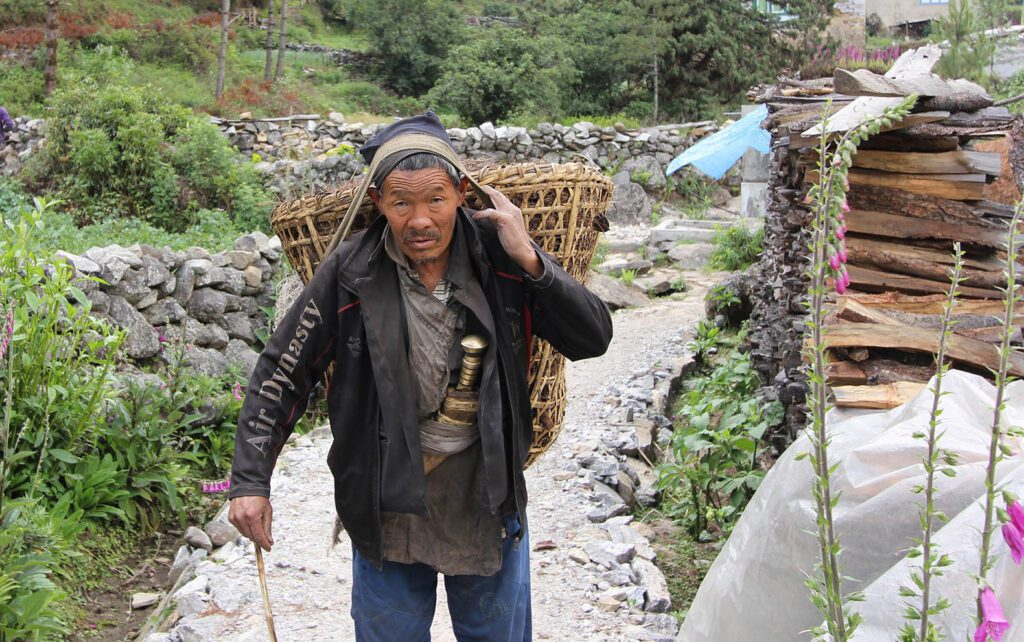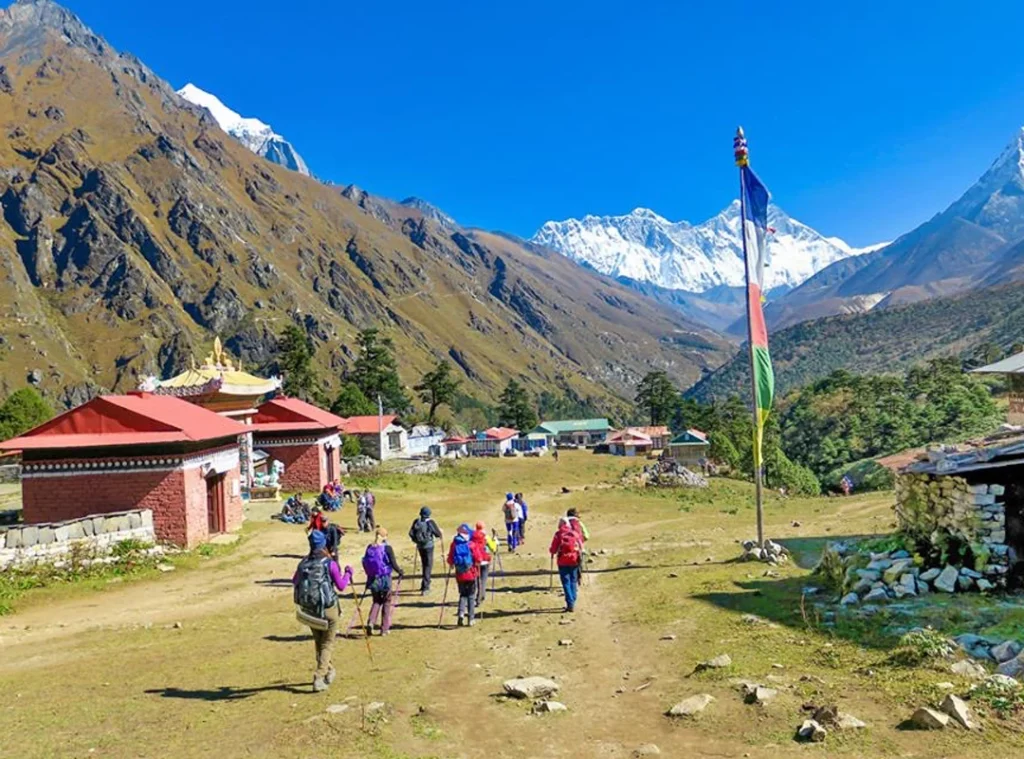When most people think of Nepal, they think of conquering mountain peaks in the heavens. Sitting in the lap of those mountains is the cultural region of Solu.
Most tourists rush north toward the high peaks of Khumbu, but Solu remains a serene and authentic landscape where Sherpa culture thrives in its original form.
In Solu, the traditions aren’t a mirage catered for showing off to tourists. They live daily in quiet, snow-capped Sherpa villages in Nepal with some of the best scenery ever. For trekkers seeking cultural immersion as profound as the mountain views, Solu’s Sherpa villages offer an experience unlike anywhere else.
In this blog, we explore what makes these villages so extraordinary and why they hold such lasting impact for those who visit during a Solu trekking Nepal journey.
What Makes Solu’s Sherpa Villages So Special
1. Deep Cultural Roots
Solu is the ancestral homeland of the Sherpa people of Nepal. They are known to be one with the snow due to their extraordinary ability to traverse through the snowy terrain.
They migrated from Eastern Tibet centuries ago. When you visit Solu, you can see a unique blend of Nepali and Tibetan culture in their lifestyle. Unlike most commercialized trekking hubs, Solu’s cultural landscape remains untouched by mass tourism.
Daily life for the people in Solu has been the same for generations so tourists can expect the most authentic and historical experience when living among the Sherpas during a trek with Sherpas.

2. Spiritual and Architectural Treasures
The region is home to some of Nepal’s most revered monasteries. They include the Thupten Chöling, a vast monastic complex in Junbesi that houses hundreds of monks and nuns.
Phugmoche Monastery, built in 1938 with distinctive Tibetan architectural elements with hundreds of devotees practicing spirituality. These monasteries are not just buildings made up of brick. They are the embodiment of centuries of learning, art, and community gathering.
Spending time in these monasteries offers deep cultural insights. Visitors can witness morning prayer rituals, explore intricate wall paintings, and hear the resonant chants of monks.
Living this lifestyle is crucial to understanding the Sherpa lifestyle Nepal is known for, where religion is spirituality integrated into everyday life.
3. Offroad Solitude
Solu’s trekking routes pass through remote trails where you might walk for hours without meeting another trekking group.
Trails wind through terraced hillsides, across suspension bridges, and into forests alive with the chirping of the birds. This solitude is a rare gift. Matching this very experience is very uncommon as Solu has a distinct vibe associated with it.
Without the noise of busy tourist corridors, travelers can slow down, engage in conversations with locals, and fully take their time to absorb their surroundings. It’s an environment where cultural exchange feels natural, not rushed, something that makes a Solu Khumbu trek so special.
4. Rich Biodiversity and Gentle Terrain
The Solu region spans elevations from around 2,000 m to 4,000 m, creating a wide range of ecosystems. In your journey you can go through lush subtropical forests to meadows with beautiful scenery and a unique lifestyle.
If you decide to go in the Spring season, your journey will be filled with beautiful flowers of different kinds. Most trekkers love the sight of rhododendron flowers which paint their pictures with color. If you decide that autumn is the vibe for you then the trek will offer you crystal-clear skies and cultural celebrations.
Moderate altitudes make Solu more accessible to a wider range of cultural trek in Nepal lovers while still offering spectacular Himalayan views.
The varied landscapes also support a diversity of wildlife, from Himalayan monals to langur monkeys, adding another layer to the trekking experience.
5. Heartfelt Sherpa Hospitality
Sherpas are some of the most hospitable people you will ever interact with. Hospitality is woven into their unique culture for centuries.
It is very common for trekkers in Solu to be a part of homestays. Since, there aren’t many commercial hotels and lodges in this region, trekkers often prefer to live with their Sherpa hosts.
They have praised the overall experience and many have deemed it as eyeopening from the cuisine, all the way to the spiritual practices. The Sherpas will make sure that the entire trek with Sherpas and the experience is hassle-free and enjoyable.
What This Means For You and to the Culture
Visiting Solu supports local economies while avoiding the over-commercialization seen in busier trekking areas. Your presence helps sustain traditional livelihoods of farming, herding, and small-scale hospitality without forcing cultural change.
Sherpa culture has commonly been depicted in the Everest climbing literature, but Solu shows you a broader tapestry.
You get to see where their traditions originate, how Tibetan Buddhism has affected them, and what adjustments have been made to living in the middle Himalayas.
Solu’s moderate altitudes allow for a relaxing trekking schedule. Thus, you can engage in the culture by seeing farmers planting potato plots, hear nuns chanting in a dark-lit gompa, or drink butter tea near a hearth.
Here, you’re not trekking through, you’re welcomed to. Several of our trekkers leave with friendships lasting well after they leave home.
Village Life in Solu
Junbesi – The Cultural Core
It has been described as the loveliest of Nepal’s Sherpa villages, and at high elevation, you have wide views of the Numbur Himal. It has a scenic layout of stone houses.
The village has Thupten Chöling Monastery, which provides spiritual studies and refuge.
Days at Junbesi can be spent exploring the monastery, visiting local orchards of valuable apple trees, or simply conversing with the villagers in the spacious town square.
Phugmoche – Monastery in the Hills
Phugmoche’s monastery is less large than Thupten Chöling but equally important. The location on a hillside provides wonderful views, and its past illustrates the patterns of migration and settling of original Sherpa families in Solu.
Ringmo and Salleri – Gateways to Solu

They are the main access points to the area for trekkers. Salleri, the district headquarters, offers a combination of Sherpa and other ethnicities, while Ringmo offers a quieter stoppage and good mountain views.
The Hiking Experience
A standard Sherpa village trek Nepal takes about 10–12 days and begins from Salleri or Phaplu.
It follows a landscape of patchwork fields, pine forests, and ridge-line trails, and occasional views of Everest on clear days. The relatively moderate day’s elevation gain makes the trek suitable for trekkers of average fitness, but the walking remains strenuous enough to be rewarding.
Accommodations are in teahouses or homestays, usually featuring upcountry Sherpa dinners of thukpa (noodle soup) and tingmo (steamed dumpling-shaped bread).
What’s the Best Time to Visit?
- Autumn (October–November): Comfortable daytime temperatures, favorable weather, and harvest festival festivities make autumn the ideal time for cultural treks in Nepal.
- Spring (March–April): The blooming of the rhododendrons colors the trails, and the weather remains moderate.
Solu is never crowded, but visiting during the shoulder season of late September or early December can provide still quieter trails.
Practical Information
- Permits: Unlike restricted areas like Tsum Valley, Solu generally requires only a TIMS card and local municipality permits.
- Accommodation: A combination of family teahouses and home-stays. Booking in advance is not generally necessary except in peak festival seasons.
- Level of Fitness: Moderate appropriate for trekkers who can handle 5–6 hours of walking a day.
- Local Manners: Dress humbly, circle religious structures in a clockwise direction, and always inquire before taking snapshots of individuals or holy sites.
Solu’s Sherpa villages in Nepal aren’t a destination, they’re an introduction to a lifestyle defined by mountains, religion, and society.
Culture in Solu isn’t something you observe, but something you breathe in and out, whether there’s an audience or not.
By joining a Solu Khumbu trek, you receive not only wide Himalayan scenes but something rarer: the chance to be within a society that has existed in harmony with nature for generations.
You leave with something more than photographs. You leave with stories, camaraderie, and a glimpse of the Sherpa lifestyle Nepal.
FAQs
1. Where is Solu and why is it distinctive for trekkers?
Unlike the crowded Khumbu trails, a Solu trekking Nepal journey offers peaceful trails, deep cultural immersion, and genuine interactions with local Sherpa communities.
2. How is trekking in Solu different from the Khumbu or Everest Base Camp trek?
The unspoiled Sherpa way of life that Nepal is known for can be found here in its essence free from mass tourism, and offering possibilities to do homestays, visits to monasteries, and close cultural interaction.
3. What is the fitness level required for a Solu Khumbu trek?
4. Do I require any special permits to trek in Solu?
5. What accommodations are available during a trek with Sherpas in Solu?
6. Is it possible to do combination treks in Nepal with Solu?
7. What sets Sherpa life in Solu apart?
Here, the culture is lived daily. Not just presented for tourists through farming, herding, spiritual practices, and tight-knit community life.

